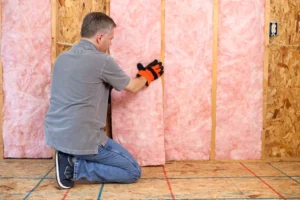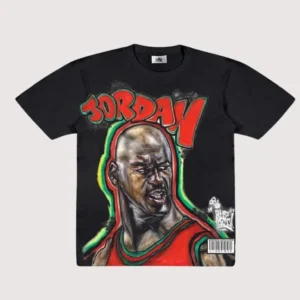A youthful, plump, and radiant appearance is something many of us desire. As we age, our skin loses collagen, elasticity, and volume, leading to wrinkles, fine lines, and sagging. Thankfully, dermal fillers provide a safe, effective, and non-surgical way to restore lost volume and rejuvenate your skin.
In this guide, we’ll dive into what dermal fillers are, how they work, their benefits, and why they’re one of the most popular cosmetic treatments today.
What Are Dermal Fillers?
Dermal fillers are gel-like substances injected beneath the skin to restore lost volume, smooth wrinkles, and enhance facial contours. Made from biocompatible materials, most dermal fillers are temporary but deliver long-lasting, natural-looking results.
Common ingredients in dermal fillers include:
- Hyaluronic Acid (HA): A naturally occurring substance in the skin that retains moisture and adds plumpness.
- Calcium Hydroxylapatite (CaHA): Stimulates collagen production and provides structure.
- Poly-L-Lactic Acid (PLLA): Gradually restores volume by encouraging collagen growth.
What Can Dermal Fillers Do?
Dermal fillers are incredibly versatile and can be used to address various concerns, including:
- Adding Volume to Cheeks and Temples: Restores a youthful, lifted appearance.
- Smoothing Nasolabial Folds: Reduces the appearance of deep smile lines.
- Enhancing Lips: Creates fuller, more defined lips.
- Contouring the Jawline and Chin: Defines facial features for a balanced look.
- Filling Under-Eye Hollows: Reduces the appearance of dark circles and tiredness.
How Do Dermal Fillers Work?
Dermal fillers are injected into specific areas of the face using fine needles or cannulas. The filler material integrates with the skin tissue, restoring volume and smoothing wrinkles. Hyaluronic acid-based fillers also attract water to the area, enhancing hydration and providing a natural, refreshed appearance.
Benefits of Dermal Fillers
- Immediate Results
You’ll notice the effects of dermal fillers right after the procedure, with minimal waiting time for full results. - Non-Surgical and Quick
Dermal fillers are a minimally invasive treatment often completed in under 30 minutes, with little to no downtime. - Customizable
Treatments are tailored to your unique facial structure and desired results, ensuring a natural look. - Safe and Effective
When performed by a qualified professional, dermal fillers are safe and deliver consistent, predictable outcomes. - Long-Lasting Results
Depending on the type of filler and the area treated, results can last from 6 months to 2 years.
Who is a Good Candidate for Dermal Fillers?
Dermal fillers are ideal for individuals who want to:
- Smooth wrinkles and fine lines.
- Restore volume lost due to aging.
- Enhance specific facial features like lips or cheeks.
- Achieve a more youthful appearance without surgery.
Most adults in good health are suitable candidates for dermal fillers, but a consultation with a qualified provider is essential to determine the best treatment for your needs.
Common Types of Dermal Fillers
1. Hyaluronic Acid Fillers (HA)
Brands: Juvederm, Restylane
- Best for adding volume and hydration.
- Commonly used for lips, cheeks, and under-eye hollows.
2. Calcium Hydroxylapatite (CaHA)
Brand: Radiesse
- Ideal for deeper wrinkles and enhancing facial contours.
- Stimulates collagen production over time.
3. Poly-L-Lactic Acid (PLLA)
Brand: Sculptra
- Gradual results that restore volume by boosting collagen production.
- Suitable for treating larger areas of volume loss.
4. Polymethylmethacrylate (PMMA)
Brand: Bellafill
- Long-lasting, semi-permanent filler for deeper wrinkles and scars.
What to Expect During the Procedure
- Consultation: Your provider will evaluate your skin, discuss your goals, and create a personalized treatment plan.
- Preparation: The treatment area is cleaned, and a numbing cream may be applied for comfort.
- Injection: The filler is carefully injected into targeted areas using fine needles or cannulas.
- Post-Treatment Care: You may experience mild swelling or redness, which subsides within a day or two.
Dermal Fillers vs. Botox
While both treatments are used to reduce signs of aging, they work differently:
- Dermal Fillers: Add volume and fill static wrinkles caused by age-related volume loss.
- Botox: Relaxes muscles to smooth dynamic wrinkles caused by facial expressions.
FAQs About Dermal Fillers
1. How Long Do Dermal Fillers Last?
Most dermal fillers last between 6 months and 2 years, depending on the type of filler and the area treated.
2. Are Dermal Fillers Painful?
The procedure is minimally invasive and performed with fine needles or cannulas. Most fillers contain lidocaine to minimize discomfort.
3. Are There Any Side Effects?
Common side effects include mild swelling, redness, or bruising, which typically resolve within a few days.
4. Can Fillers Be Reversed?
Yes, hyaluronic acid fillers can be dissolved using an enzyme called hyaluronidase if adjustments are needed.
5. How Much Do Dermal Fillers Cost?
The cost depends on the type of filler, the number of syringes used, and the treatment area. Consult your provider for an estimate.






